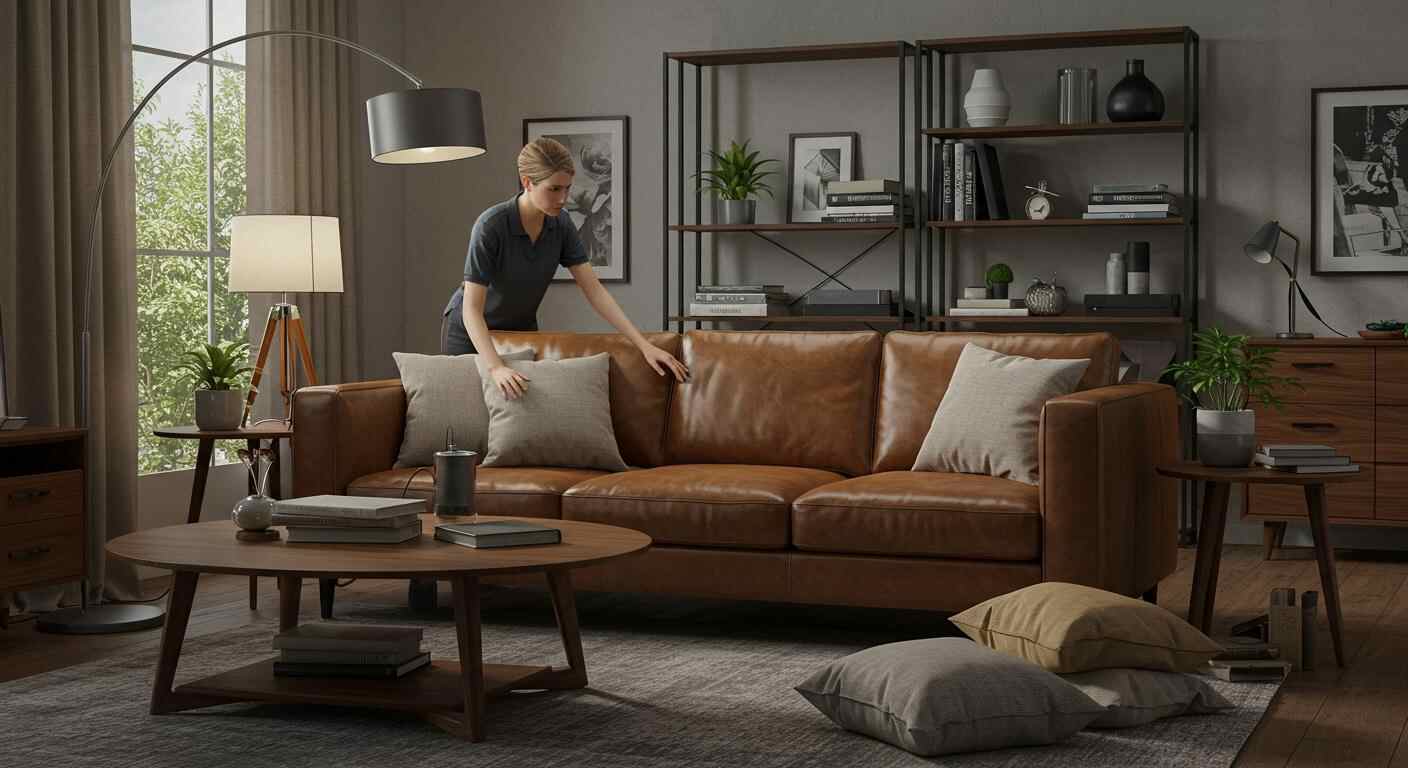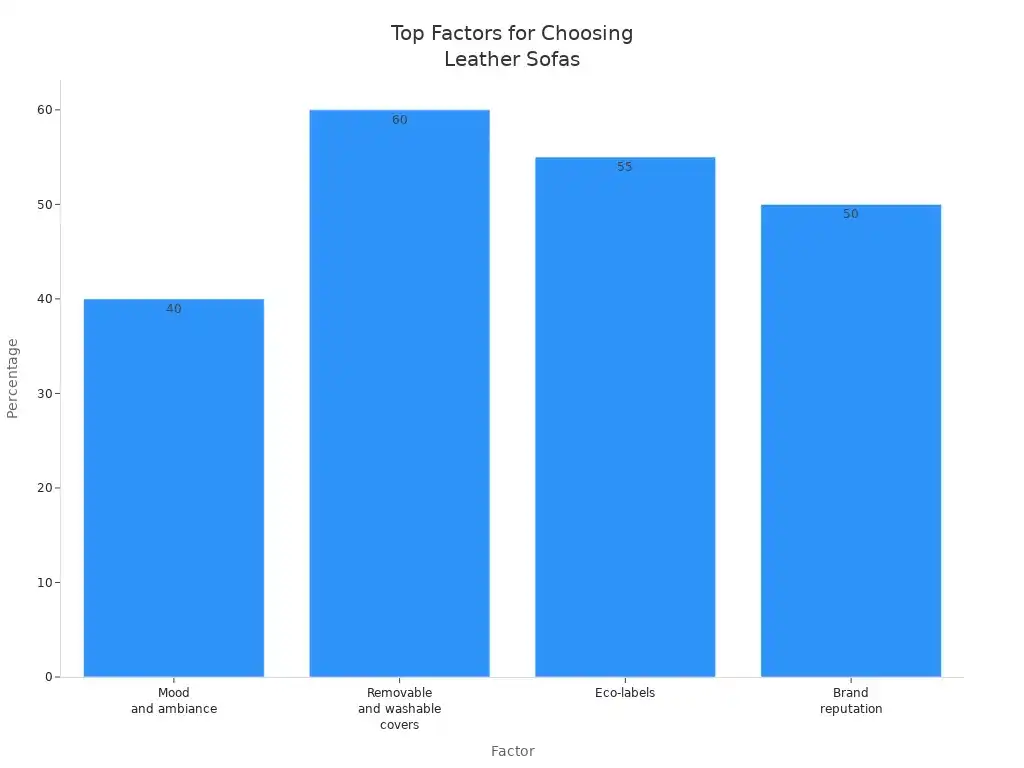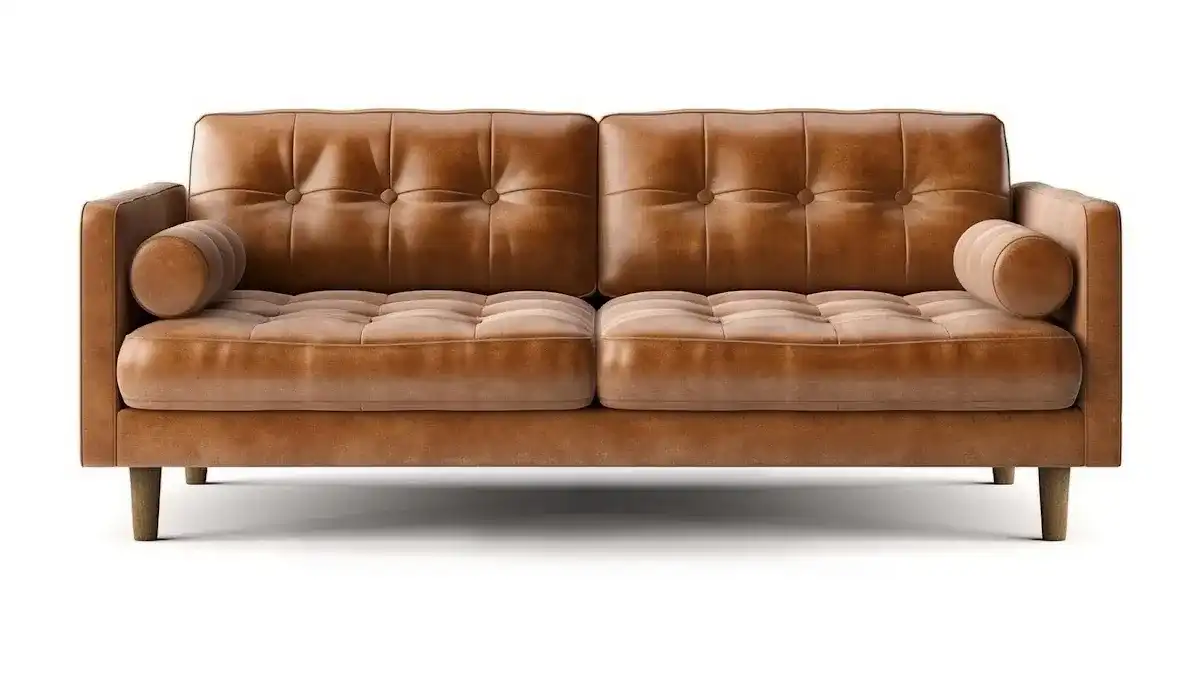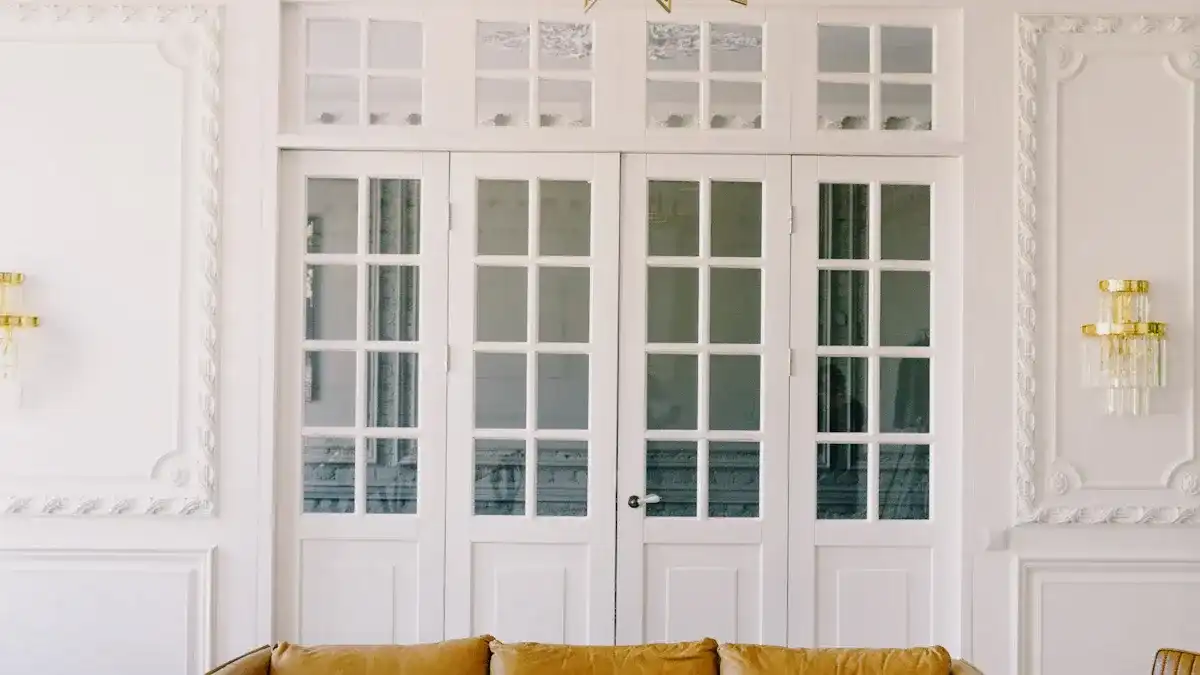Address
No.3 Chengcai Road, Leliu Town, Shunde District, Foshan City, Guangdong, China 528322
Address
No.3 Chengcai Road, Leliu Town, Shunde District, Foshan City, Guangdong, China 528322
Find the best leather sofa for your living room by considering comfort, durability, style, and size to match your space and lifestyle needs.


You want your living room to feel welcoming and stylish, so picking the right leather sofa makes a big difference. Most people look for comfort, size, and a couch that fits their mood. Take a peek at what matters most to buyers:
Factor | Percentage |
|---|---|
Mood and ambiance | 40% |
Removable and washable covers | 60% |
Eco-labels | 55% |
Brand reputation | 50% |

If you want a couch that lasts, focus on quality. Look at leather type, maintenance needs, and style. A quality sofa gives you comfort and helps create the perfect space.
Think about what you need before you shop. Decide how you will use the sofa and which features are most important to you.
Pick good leather types like full-grain or top-grain for comfort and strength. Do not pick bonded leather if you want it to last a long time.
Measure your room carefully so the sofa will fit. Make sure there is space around the sofa so you can move easily.
Try sitting on the sofa in the store to see if it is comfortable. Check the cushions and support to find what feels best for you.
Make a budget and look for the best value. Choose strong materials and good build so your sofa lasts a long time.

Before you start shopping, think about what to look for in a leather sofa. Ask yourself how you plan to use your new couch. Will it be the main spot for family movie nights? Do you want a place for guests to relax? Maybe you need a sofa that can handle pets or kids running around. Your answers will help you narrow down your choices.
Interior designers suggest a few key steps when picking out a leather sofa:
Learn about different grades of leather, like top grain and full grain. These types offer better durability and a richer look.
Skip lower quality options, such as bonded leather. They may look nice at first, but they don’t last as long.
Talk to furniture experts if you have questions about quality or how long a couch will last.
If you have a busy household, durability matters. High-quality leather can handle spills, messes, and even pet accidents. Top-grain leather stands up to daily use and keeps looking good. Faux leather can also work well if you want something easy to clean.
Tip: Make a list of your must-haves before you visit the store. This helps you stay focused and avoid getting overwhelmed by all the choices.
Your lifestyle plays a big role in choosing the right sofa. If you have pets, you’ll want a couch that resists scratches and is easy to clean. Leather is great for homes with animals because fur wipes off easily, and natural oils help prevent odors. Spills and accidents don’t soak in, so you can clean up quickly.
Families with kids need a sofa that can handle lots of activity. High-quality leather stands up to jumping, climbing, and snack time. Over time, leather develops a patina, which adds character and charm to your living room.
Here’s what to look for if you have pets or children:
Leather resists damage from claws and paws.
Hair and fur come off with a quick wipe.
Spills clean up fast, so you don’t have to worry about stains.
Leather doesn’t hold onto smells, even after accidents.
The surface gets better with age, showing a unique patina.
If you want a couch that lasts, think about how much wear it will get. Ask yourself these questions:
How much will pets or kids use the sofa?
What is your budget for repairs or replacements?
Are you willing to choose durability over style?
Can you keep up with regular cleaning and care?
While a leather sofa might cost more upfront, it saves you money in the long run. You won’t need to replace it as often, even if you have a busy home. That makes it a smart investment for families and pet owners.
Note: If you love entertaining, pick a couch that feels comfortable and looks inviting. Your guests will appreciate a sofa that’s both stylish and sturdy.
Before you fall in love with a new sofa, grab a tape measure and check your living room. You want to know the exact length and width of your space. Don’t forget to measure the height, especially if you have low ceilings or tall furniture nearby. Always measure doorways, hallways, and any tight corners where you’ll carry the couch. This step helps you avoid surprises on delivery day.
Many people make mistakes when measuring for a new sofa. Here are some common slip-ups:
Forgetting to include the shape of the sofa, like rounded arms or a curved back.
Using a ruler or guessing instead of a tape measure.
Measuring the sofa in a different room, which can lead to problems fitting it in your living room.
Urban apartments usually have smaller living rooms than suburban homes. If you live in a city, you might need a sofa that saves space or offers extra features, like a sleeper or storage. Suburban homes often have more room, so you can choose a larger couch if you want.
Tip: Write down all your measurements before you shop. This makes it easier to compare sofa sizes and find the perfect fit.
Once you know your room’s size, think about where you want to place your sofa. You need enough space to walk around and relax without bumping into furniture. Here’s a quick guide to help you plan:
Clearance Type | Minimum Distance |
|---|---|
Walkway Space Around Sofa | |
Clearance in Front of Doorway | 3 feet |
Space Between Sofa and Coffee Table | 18 inches |
Leave at least 30-36 inches of walkway space around your couch for easy movement.
Make sure there’s 3 feet in front of each doorway so people can enter and exit comfortably.
Keep 18 inches between your sofa and coffee table for leg room.
A well-placed couch makes your living room feel open and welcoming. You’ll enjoy more comfort and avoid clutter. Take your time with this step, and your new sofa will look great and fit perfectly.
When you look for a leather sofa, comfort is very important. You want a couch that feels good every time you sit. Let’s talk about what makes a sofa comfortable.
The cushion fill changes how your sofa feels. Some cushions are soft and squishy. Others are firmer and give more support. Here are the main types you might see in good couches:
Cushion Type | Description | Comfort Impact |
|---|---|---|
Down Seat Cushions | Made of down or feathers, creating a plush seat. | Soft and comfortable, can be fluffed. |
Innerspring Cushions | Feature pocketed coils wrapped in foam, varying from medium to firm. | Offers support, durability varies. |
Foam Seat Cushions | High-density foam provides a firmer seat; lower densities are plusher. | Firmness varies with density. |
Memory Foam Cushions | Form-fitting, often combined with other materials for comfort. | Firm and supportive, retains shape. |
If you like to sink into your couch, down cushions are best. If you want more support, try memory foam or innerspring. High-density foam is firmer and keeps its shape longer. Always check the cushion fill before you buy. It changes how comfy and strong your sofa is.
Support is just as important as cushion fill. The best sofas have more than a soft seat. Orthopedic experts say you should look for these features:
Feature | Description |
|---|---|
Multiple Recline Angles | 3-5 preset positions for flexible seating. |
Zero-Gravity Position | Reduces pressure on your spine by elevating your legs. |
Cushioning Materials | High-density foam and breathable fabrics for lasting comfort. |
Proper Sizing | Seat depth and backrest height should fit your body to prevent discomfort. |
Sturdy Construction | Hardwood or steel frames for durability and ergonomic support. |
Try out the seat depth, backrest, and armrests if you can. You want a sofa that fits your body and supports you well. This helps you stay comfy during movies or naps.
The best sofas use good materials and smart design. Look for high-density foam or memory foam cushions, strong frames, and adjustable features. These sofas give you comfort and support for a long time. If you want a sofa that feels good every day, check both the inside and outside. A good leather sofa will make you happy for years.
Tip: Always test a sofa in the store if you can. Sit down, lean back, and see if it feels right. Your comfort is the most important thing!
Choosing the right leather for your sofa can feel tricky. You want something that looks great, feels comfortable, and lasts for years. Let’s break down the main types you’ll see when shopping for a high quality couch.
You’ll hear a lot about full-grain and top-grain leather. These are the best choices if you want genuine leather sofas that stand the test of time. Full-grain leather keeps all the natural marks and texture from the hide. This means your sofa will have a unique look, with little imperfections that add character. Full-grain is thick and tough, so it can last for decades.
Top-grain leather gets sanded to remove blemishes. This makes it smoother and easier to work with, but it’s a bit thinner than full-grain. You still get a high quality finish, but top-grain won’t develop as much patina over time.
Here’s a quick comparison to help you decide:
Feature | Full-Grain Leather | Top-Grain Leather |
|---|---|---|
Appearance | Natural marks and texture, unique look | Smooth, uniform surface |
Durability | Most durable, lasts decades | Hardwearing, but less durable than full-grain |
Patina | Develops a rich patina over time | Minimal patina due to sanding |
If you want a leather sofa that ages beautifully and stays strong, go for full-grain or top-grain. These types offer the best quality and comfort for your living room.
Tip: Full-grain and top-grain aniline leather give you the longest lifespan and the richest look. You’ll notice the difference every time you sit down.
Split-grain and bonded leather are more affordable, but they don’t offer the same quality as full-grain or top-grain. Split-grain comes from the lower layers of the hide. It feels thinner and doesn’t have the natural strength of genuine leather sofas. Bonded leather uses scraps and fibers glued together, then coated to look like real leather.
These options might look nice at first, but they wear out much faster. Split-grain sofas usually last between 3 and 7 years. Bonded leather couches often show cracks and peeling in less than 2 years. If you want a high quality sofa that lasts, you’ll want to skip these types.
Lifespan | |
|---|---|
Full-Grain | 10–15+ years |
Split Grain | 3–7 years |
Bonded | < 2 years |
You might save money upfront, but you’ll probably need to replace your couch sooner. That means more hassle and less value for your home.
Note: Split-grain and bonded leather don’t hold up to heavy use. If you have kids or pets, these sofas may not be the best choice.
Faux leather gives you the look of genuine leather sofas without the higher price tag. It’s made from plastics, so it’s easy to clean and resists stains. Many people choose faux leather for a modern style or for homes with pets.
But there are some downsides. Faux leather doesn’t last as long as high quality genuine leather. It can crack or peel after a few years. The environmental impact is also bigger. Faux leather doesn’t break down in landfills, and it can release microplastics into the ocean. Making faux leather uses a lot of energy and chemicals, which can harm the planet.
Environmental Impact | Faux Leather | Genuine Leather |
|---|---|---|
Non-Biodegradability | Does not decompose naturally, leads to landfill pollution | Biodegradable |
Microplastics in Oceans | Releases microplastics, harms marine life | Not applicable |
Energy-Intensive Production | Requires significant energy, increases greenhouse gas emissions | Less energy-intensive |
Resource Depletion | Made from petroleum-based plastics | Derived from animal sources |
Toxic Chemicals | Involves toxic chemicals, causes air and water pollution | Varies by tanning process |
If you want a sofa that’s easy to clean and fits your budget, faux leather might work. Just remember, it won’t last as long as a high quality genuine leather sofa, and it’s not as eco-friendly.
Tip: For the best mix of style, comfort, and durability, choose full-grain or top-grain leather. These options give you the most value and quality for your living room.

You want your living room to feel like home, so matching your sofa style to your decor matters. If you love a modern look, pick a couch with clean lines and simple shapes. For a traditional space, try rolled arms or tufted backs. Mid-century styles work well if you like a mix of old and new. The best leather couches blend in with your other furniture and make the room feel complete.
Tip: Take a photo of your living room before shopping. This helps you picture how each sofa will look in your space.
The best leather couches do more than offer a place to sit. They set the mood for your whole room. You can find styles with sleek metal legs for a modern vibe or wooden frames for a cozy, rustic feel. Some couches have deep seats for lounging, while others have firmer cushions for a polished look. Choose a sofa that fits your lifestyle and shows off your taste.
Here are some popular styles for 2024:
Modern: Straight lines, low backs, and slim arms.
Classic: Tufted backs, rolled arms, and rich details.
Sectional: Great for big families or open spaces.
Loveseat: Perfect for small rooms or as an extra seat.
Color changes everything. The best leather couches come in many shades, so you can pick what works best for your home. In 2024, rich and earthy tones are very popular. These colors add warmth and make your living room feel inviting. Bold shades like red, blue, or yellow can turn your couch into a statement piece.
Color Type | Description |
|---|---|
Colors like vibrant red, bold blue, and bright yellow that add energy. | |
Earthy Tones | Rich reds, deep browns, rustic bricks, lush greens, calming blues, naturals. |
Light colors, such as cream or pale blue, make small rooms look bigger and brighter. Dark shades like navy or charcoal create a cozy spot but can make a room feel smaller if you do not balance them with lighter walls or decor. The way your sofa color interacts with your lighting can change the whole mood of your living room.
Note: Pick a color that matches your style and makes you happy every time you walk in the room.
Setting a budget for your new sofa is a smart first step. Prices for leather sofas can vary a lot. You might see some couches that look great but cost less than $1,000. Others can go well over $2,000, especially if you want something premium. Here’s a quick look at what you can expect to pay in 2024:
Price Category | Price Range |
|---|---|
Affordable | Less than $1000 |
Mid-tier | $1,000 – $2,000 |
Premium | Over $2,000 |
Most leather sofas fall into the premium category. If you want a couch that lasts and looks stylish, you may need to spend a bit more. Think about what features matter most to you. Do you want a big sectional or a simple loveseat? Your choice will affect the price.
Tip: Write down your top three must-haves before you shop. This helps you stick to your budget and avoid surprises.
You want your money to go as far as possible. Price does not always mean better quality. Some expensive sofas use high-end leather, but that does not always make them more durable or stain-resistant. Look for these signs of value:
The type of leather matters. Full-grain and top-grain leather usually last longer and look better over time than bonded leather.
Check the frame. Sofas with thick, sturdy frames hold up better and feel more comfortable.
Pay attention to the details. Good stitching and strong upholstery add to the sofa’s lifespan.
A higher price might mean better materials, but not always. Some couches cost more because of brand names or fancy designs. Focus on what you need for your home. If you have kids or pets, durability is key. If you want a showpiece, style might matter more.
Note: Take your time and compare different options. A little research helps you find the right balance between price and quality for your living room.
Taking care of your leather sofa keeps it looking great and feeling comfortable for years. With a few simple habits, you can protect your investment and enjoy a cozy, stylish space.
You don’t need fancy products to keep your couch clean. Here’s how you can handle everyday messes and keep your sofa fresh:
Blot spills right away with a clean, dry cloth. Don’t rub—just press gently to soak up the liquid.
For tough stains, mix equal parts lemon juice and cream of tartar. Spread the paste on the spot, wait ten minutes, then wipe it off.
Make a gentle cleaner by mixing a little olive or coconut oil with a few drops of natural soap. Rub it on the leather in circles with a microfiber cloth, let it sit, then wipe away any extra.
Tip: Condition your leather couch every 6 to 12 months. This keeps the material soft and helps prevent cracks.
Everyday life can be tough on your sofa, especially in busy homes. Here are some ways to stop damage before it starts:
Keep your sofa out of direct sunlight. Sun can dry out leather and cause fading.
Place your couch away from heaters or fireplaces. Too much heat makes leather brittle.
Condition your sofa more often in winter, about every three months, if the air feels dry.
Avoid harsh cleaners. They can strip away natural oils and lower the quality of your leather.
Remind kids not to jump or climb on the sofa. This helps prevent sagging and broken frames.
You want your leather sofa to last as long as possible. Try these extra steps for protection:
Trim your pets’ claws and use throws or slipcovers to guard against scratches.
Keep the room’s humidity balanced. Too much moisture can cause mold, while dry air leads to cracks.
Check the stitching and cushions every few months. Fix small problems early to keep your sofa in top shape.
Note: A little care goes a long way. When you treat your couch with attention, you keep its quality and comfort for years.
You can find the perfect leather sofa by following a few smart steps. Start with these expert tips:
Test the support system.
Check the seat cushions.
Learn about leather types.
Pick a trusted store.
A smooth buying journey makes you feel good about your new couch. Stores with helpful staff and online tools let you picture the sofa in your space.
Description | |
|---|---|
Seamless Purchase Journey | Makes you feel comfortable and happy. |
Online Tools | Help you see the couch in your room. |
In-Store Experience | Friendly staff guide your choices. |
Take your time, measure your space, and choose comfort and quality. Trust yourself—you’ve got this!
You can wipe spills with a dry cloth. Use a gentle cleaner for tough spots. Dust often. Condition the leather every few months. Avoid harsh chemicals.
Leather resists most scratches. Trim your pet’s nails and use throws for extra protection. Full-grain and top-grain leather handle pet wear better than bonded leather.
Yes, direct sunlight can fade leather. Place your sofa away from windows or use curtains. Conditioning helps keep the color rich.
Small cracks can be treated with leather conditioner. Peeling often means the leather is bonded or faux. You may need a professional for big repairs.
Dark colors like brown or navy hide stains better than light shades. If you want less cleaning, pick a darker tone.